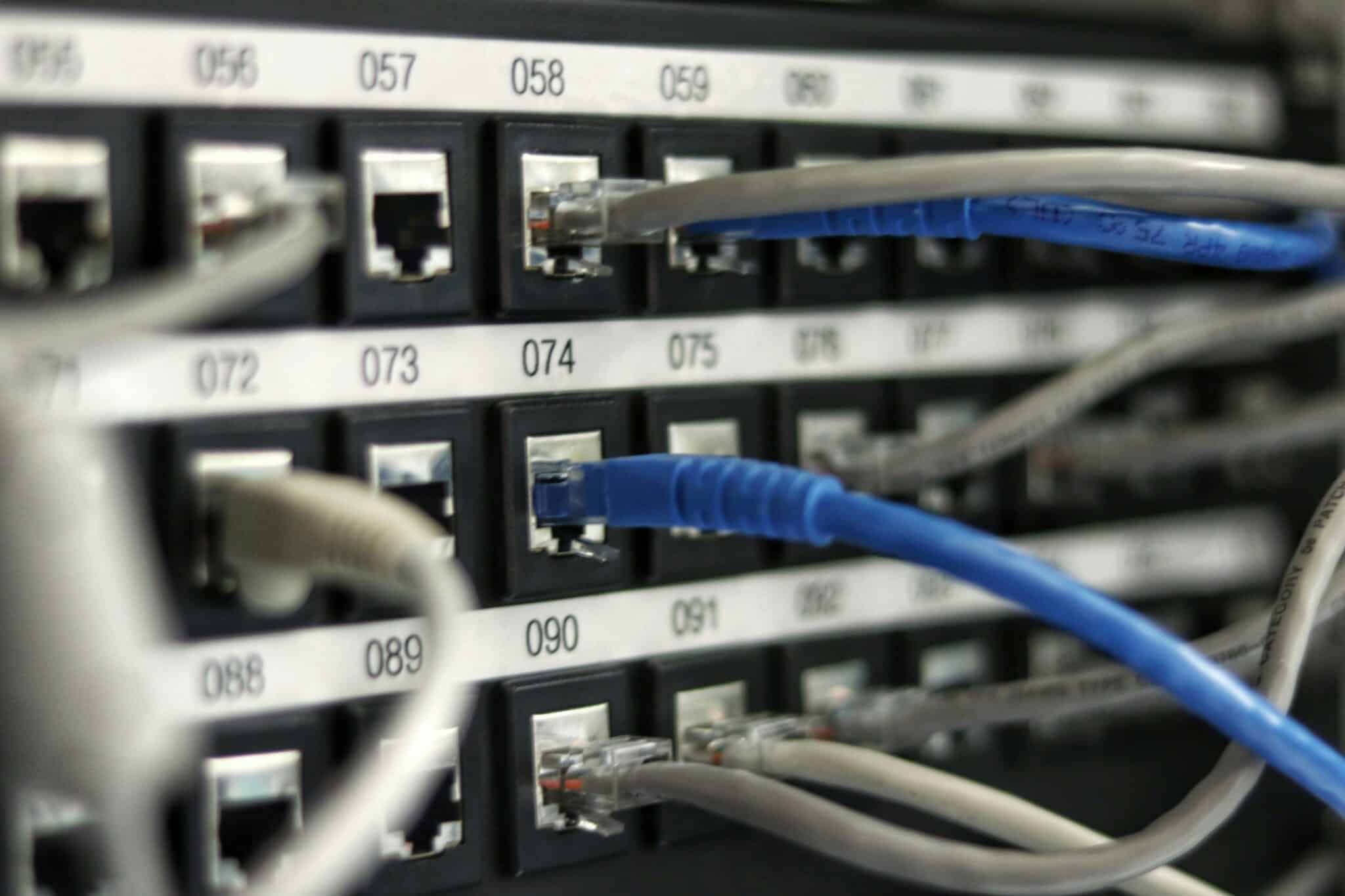The modern office is a dynamic and ever-evolving landscape where technology plays an increasingly vital role in shaping its success. From fostering seamless communication and collaboration to optimizing the use of physical space, the right technology tools are essential for empowering your workforce and driving productivity. Let’s explore how technology is revolutionizing the modern workplace and uncover the most impactful solutions available to businesses today.
The Use of Technology in the Office
Workplace technology encompasses all the digital tools and systems that enhance how we work. Its benefits are far-reaching:
- Productivity Boost: Automating routine tasks frees up valuable time for employees to focus on higher-value activities.
- Enhanced Collaboration: Technology facilitates seamless communication and knowledge sharing, even across remote teams.
- Data-Driven Decisions: Analytics tools provide insights into space utilization, employee behavior, and operational efficiency, allowing for informed decision-making.
- Employee Well-being: Technology can improve the office environment, from optimizing lighting and temperature to promoting healthier work habits.
Different Types of Technology in the Modern Workplace
Workplace Communications
Effective communication is the lifeblood of any successful organization. As the modern workplace evolves, facilities managers must embrace technology tools that bridge the gap between dispersed teams and foster seamless collaboration. Here’s a look at some powerful communication solutions:
Team Chat and Collaboration Platforms
- Slack: The current leader in team chat, Slack organizes conversations into channels, making it easy to discuss specific topics, projects, or departments. Its robust search functionality, file sharing, and integrations with hundreds of apps make it a productivity powerhouse.
- Microsoft Teams: Bundled with Office 365, Teams combines chat, video meetings, file storage, and app integration. It’s a solid choice for businesses already invested in the Microsoft ecosystem.
Collaboration Beyond Chat
- Google Workspace: Google Docs, Sheets, and Slides enable real-time collaboration on documents, fostering creativity and eliminating the need for endless email chains.
- Workplace by Facebook: This platform leverages familiar Facebook features for streamlined communication within groups, live-streaming events, and video conferencing.
- Video Conferencing Platforms: Tools like Skype, Zoom, and GoToMeeting bring teams together face-to-face, regardless of location, eliminating the need for travel and fostering more personal connections.
- Cisco Webex: Webex simplifies virtual meetings, allowing participants to join from any device and even view shared documents during calls.
Integrated Workplace Management Software (IWMS)
Integrated Facilities Management (IFM) is the practice of consolidating multiple office services under a single contract and management team. The cornerstone of IFM is technology, specifically, Integrated Workplace Management Software (IWMS). IWMS serves as a central hub, bringing together disparate elements of facilities management onto a single platform.
Understanding IWMS and its Benefits
IWMS is the most comprehensive type of facilities management software, encompassing features found in CAFM, CMMS, and EAM systems, along with additional functionalities designed to optimize the entire workplace experience. Here’s what IWMS can do for your organization:
- Space Optimization: Analyze how your office space is used to make informed decisions about real estate utilization, from desk assignments to meeting room configurations.
- Asset Management: Track and manage office assets throughout their lifecycle, from procurement to disposal.
- Maintenance Management: Streamline work orders, preventive maintenance scheduling, and vendor management.
- Real Estate Portfolio Management: Gain insights into your real estate portfolio, including lease management, occupancy tracking, and financial analysis.
- Employee Experience: Features like wayfinding apps, mobile visual directories, and request management tools empower employees and enhance their overall workplace experience.
IWMS in Action: A Real-World Example
Imagine an employee needing to find a free meeting room. With an IWMS, they can easily check availability, book the space, and even locate it using the wayfinding app on their phone. Meanwhile, if they notice a flickering light, they can submit a maintenance request with a photo directly from the app. This streamlined approach not only saves time but also enhances the overall workplace experience.
Wayfinding and Kiosk
Offices are constantly evolving spaces, with employees changing roles, layouts being redesigned, and renovations altering familiar paths. In this fluid environment, locating colleagues, resources, or even a specific desk can be a time-consuming task. Wayfinding software and kiosks offer a streamlined solution, revolutionizing how people navigate large office buildings.
Wayfinding Software
Gone are the days of relying on static maps and spreadsheets to locate employees and resources. Wayfinding software provides an interactive floor plan that:
- Visualizes Seating Plans: Instantly see who sits where, along with their department, title, contact information, and even a photo. This makes finding colleagues a breeze, especially in large organizations.
- Locates Resources: Easily pinpoint printers, meeting rooms, break areas, and other important resources, saving employees valuable time.
- Simplifies Onboarding: New hires can quickly learn the office layout and find their colleagues, accelerating their integration into the company culture.
Wayfinding Kiosks
Wayfinding kiosks take digital navigation to the next level. These touchscreen displays, strategically placed throughout the office, offer a user-friendly interface for:
- Interactive Maps: Employees and visitors can easily explore floor plans, zoom in on specific areas, and get directions to their destination.
- Search Functionality: Quickly locate colleagues, resources, or even specific departments.
- Real-Time Updates: The kiosk’s maps reflect the latest changes to the office layout, ensuring accuracy and preventing confusion.
- Additional Information: Kiosks can display company announcements, news, or even weather forecasts.
Benefits of Wayfinding and Kiosks
Wayfinding and kiosks significantly improve the workplace experience. They empower employees to navigate confidently and efficiently, reducing frustration and increasing productivity. They create a welcoming environment for visitors, leaving a positive first impression. Unlike static maps, these tools adapt to office changes, accommodating growth and renovations without confusion. They also streamline navigation, reducing the need for manual assistance and lowering operational costs. Ultimately, wayfinding and kiosks contribute to a more efficient and user-friendly workplace.
Room Booking
Room booking software revolutionizes how meeting rooms and workspaces are reserved, enhancing both employee experience and facilities management. Ideally integrated into a company’s IWMS, this technology simplifies the process of finding and booking available rooms, whether through desktop browsers, mobile devices, or convenient touchscreens outside meeting rooms.
Empowering Employees with Efficient Booking
Room booking software empowers employees to:
- Book effortlessly: Quickly find and reserve available rooms in real time.
- Stay informed: Access accurate information about room availability, features, and capacity.
- Communicate seamlessly: Integrate with tools like Slack, Gmail, and Skype to easily share meeting details.
- Choose the right space: Select rooms that best suit their specific needs, ensuring a productive meeting or focused work session.
Data-Driven Facilities Management
Room booking software doesn’t just benefit employees; it equips facilities managers with valuable data on:
- Room utilization: Understand how often and for what purposes rooms are used.
- Peak demand times: Identify peak booking periods to optimize scheduling and resource allocation.
- Room preferences: Learn which room features are most popular to guide future space planning.
These insights empower facilities managers to make informed decisions about office layout, resource allocation, and future investments, ultimately leading to a more efficient and productive workspace.
IoT & Workplace Sensors
The Internet of Things (IoT) has revolutionized the modern workplace, connecting everyday objects and devices to the internet and transforming them into sources of valuable data. By integrating sensors into various aspects of the office environment, facility managers can gain unprecedented insights into how spaces are used, optimize resource allocation, and enhance operational efficiency.
Harnessing the Power of IoT Sensors
IoT sensors are embedded in everything from thermostats and lighting systems to occupancy sensors and desk booking platforms. These sensors collect real-time data, providing a wealth of information on:
- Occupancy: Track how often spaces are used and identify peak utilization times to optimize cleaning schedules, energy usage, and space allocation.
- Environmental Conditions: Monitor temperature, humidity, and air quality to ensure a comfortable and healthy work environment.
- Asset Utilization: Track the usage of desks, meeting rooms, and equipment to identify underutilized assets and optimize resource allocation.
- Security: Integrate sensors with security systems for enhanced monitoring and access control.
Transforming Data into Actionable Insights
The data generated by IoT sensors is a goldmine for facilities managers. By analyzing this data, they can:
- Make informed decisions: Base decisions on real-time data rather than assumptions or outdated information.
- Optimize space utilization: Identify underutilized areas and reconfigure spaces to maximize efficiency.
- Reduce costs: Optimize energy consumption, streamline cleaning schedules, and reduce maintenance costs.
- Improve employee experience: Tailor the workplace environment to employee preferences and create a more comfortable and productive space.
- Enhance security: Identify security risks and implement proactive measures to protect the workplace.
Building Automation
Building automation systems (BAS) are the brains behind modern, intelligent buildings. By automating and controlling various building systems like HVAC, lighting, security, and more, BAS technology optimizes energy usage, enhances comfort, and reduces operational costs.
The Building Blocks of a BAS
- Sensors: These devices gather data on temperature, humidity, occupancy, lighting levels, and other environmental factors.
- Controllers: The “brains” of the BAS, controllers collect sensor data, analyze it, and send commands to output devices.
- Output Devices: These devices carry out the controller’s commands, adjusting lighting, HVAC settings, security systems, etc.
- Communication Protocols: The language that enables communication between the different components of the BAS. Open protocols like BACnet and Modbus offer greater flexibility and compatibility.
- Interfaces: The user-friendly tools that allow building operators to monitor and control the BAS.
Benefits of Building Automation
- Energy Efficiency: BAS optimizes energy usage, leading to significant cost savings and reduced environmental impact.
- Improved Comfort: Temperature, lighting, and air quality are precisely controlled, creating a more comfortable and productive work environment.
- Predictive Maintenance: By detecting equipment issues early on, BAS helps prevent costly breakdowns and extends the lifespan of building systems.
- Data-Driven Decision-Making: BAS generates a wealth of data that facilities managers can use to identify inefficiencies, optimize operations, and make informed decisions about building upgrades and investments.
Trends in Workplace Technology
The evolution of workplace technology is accelerating at an unprecedented pace, with groundbreaking innovations poised to redefine how we work, collaborate, and interact with our office environments. Let’s delve into some of the most transformative trends shaping the future of the office:
Artificial Intelligence (AI)
AI is at the forefront of this transformation. Beyond the realm of robots, AI-powered software is driving intelligent decision-making in facilities management. For instance, Google has successfully deployed AI to optimize cooling in its data centers, realizing significant energy savings. Smart buildings like the Edge in Amsterdam showcase the potential of AI to analyze data from thousands of sensors, adapting resource consumption in real time based on occupancy and environmental factors. This data-driven approach not only reduces costs but also minimizes the environmental footprint of modern offices. Additionally, AI is playing a crucial role in predictive maintenance, anticipating equipment failures, and preventing costly downtime.
Building Information Modeling (BIM)
BIM is another key trend reshaping the workplace landscape. This collaborative process leverages 3D models throughout a building’s lifecycle, from design and construction to ongoing management. By providing a comprehensive digital representation of the building, BIM enables facility managers to optimize operations, streamline maintenance, and identify potential issues before they escalate into costly problems. The result is a more efficient, cost-effective, and sustainable workplace.
Augmented Reality (AR) & Virtual Reality (VR)
Immersive technologies like AR and VR are poised to transform the workplace experience. Architects and designers can now create virtual walkthroughs of buildings before they are constructed, allowing for early identification of design flaws and reducing the need for costly modifications. In facility management, AR can overlay digital information onto the physical environment, guiding technicians through maintenance tasks and providing real-time data to support decision-making. The potential for AR and VR to enhance collaboration, training, and visualization in the workplace is immense.
Unlocking Productivity and Innovation Through Technology
As we’ve explored in this blog post, workplace technology is not just a trend; it’s a fundamental shift in how we approach the modern office. From seamless communication platforms to intelligent building automation, each technological advancement contributes to a more efficient, collaborative, and sustainable work environment.
The integration of technology empowers employees by streamlining tasks, fostering communication, and providing data-driven insights. Facility managers gain valuable tools for optimizing space utilization, reducing costs, and enhancing the overall workplace experience.
While the specific technology solutions may vary depending on an organization’s unique needs and priorities, the overarching theme is clear: embracing technology is no longer optional for businesses that strive to remain competitive and attract top talent.
By investing in the right technologies and integrating them strategically, organizations can create workplaces that not only meet the demands of the present but also adapt seamlessly to the evolving needs of the future. The modern office is not just a physical space; it’s a dynamic ecosystem where technology plays a pivotal role in driving innovation, productivity, and overall success. As we move forward, it’s essential to embrace this technological revolution and harness its power to create a brighter future for work.





